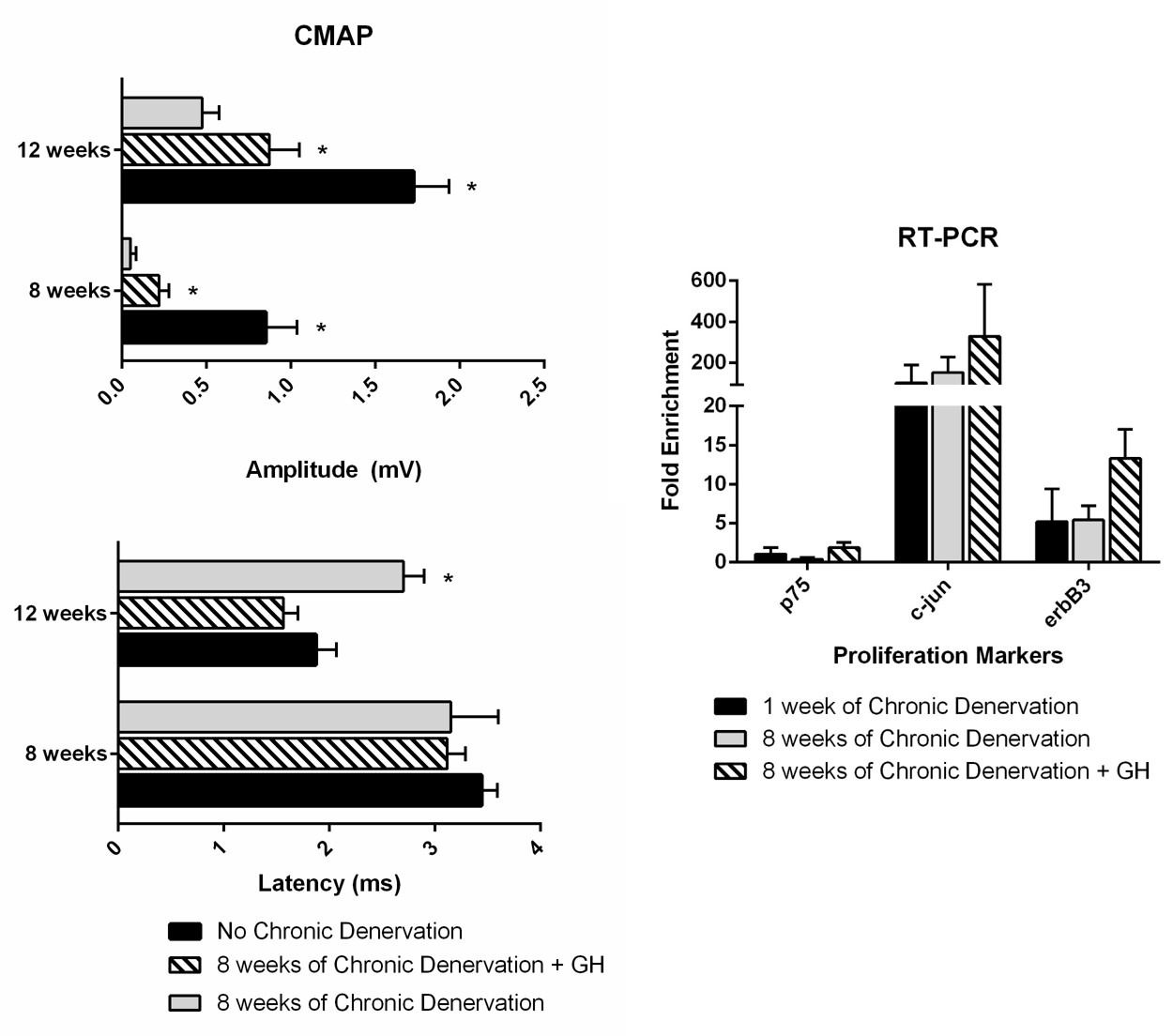|
|
|
|
|
Back to 2016 Annual Meeting
Growth Hormone Ameliorates the Effects of Chronic Denervation Injury on Peripheral Nerve Regeneration and Improves Upper Extremity Murine Function
Joseph Lopez, MD MBA, Amy Quan, MPH, Joshua Budihardjo, BS, Kim X. Sinan, Howard Wang, MD, Christopher Cashman, BS, Ahmet Hoke, MD PhD, W.P Andrew Lee, MD, Sami Tuffaha, MD, Gerald Brandacher, MD.
Johns Hopkins Hospital, Baltimore, MD, USA.
BACKGROUND: Several experimental studies suggest that growth hormone-based therapies have the potential to accelerate and augment axonal regeneration while simultaneously act directly on muscle and Schwann cells (SCs) to minimize denervation atrophy prior to re-innervation. The purpose of this study was to assess the impact of growth hormone (GH) therapy on preventing the deleterious effects of chronic denervation injury on peripheral nerve regeneration and resulting extremity function. We hypothesized that systemic GH therapy can maintain chronically-denervated muscle and SCs and improve murine extremity function in the setting of chronic denervation (CD).
METHODS: We utilized a rat CD model to assess the effects of GH therapy on: a) maintaining denervated muscle and SCs, and b) functional recovery in the setting of chronic denervation. Four groups of Lewis rats were examined: (1) Group 1 animals (negative control, n = 8) underwent 8 weeks of median nerve CD injury followed by repair; (2) Group 2 animals (experimental, n = 8) underwent 8 weeks of median nerve CD followed by repair and treatment with highly purified lyophilized pituitary porcine GH (0.6 mg/day); (3) Group 3 animals (positive control, n = 8) underwent nerve surgery without median nerve CD injury; (4) Group 4 animals (naïve positive control, n = 8) underwent no nerve surgery. All groups underwent weekly functional and monthly CMAP testing for 14 weeks post-nerve repair. To enable the assessment of the effects of GH therapy on maintaining denervated muscle and SCs: Group 1 animals also underwent 8 weeks of contralateral femoral nerve CD; Group 2 animals underwent 8 weeks of femoral nerve CD (w/ GH treatment as stated above); Group 3 animals underwent 1 week of femoral nerve CD; and Group 4 animals underwent no femoral nerve CD. The femoral nerve and lateral gastrocnemius muscle were harvested after completion of femoral nerve CD injury time point to assess for SC proliferation/senescence markers (via qPCR) and muscle atrophy (via muscle weight).
RESULTS: Group 2 rats demonstrated statistically significant greater functional recovery as compared to Group 1 rats (Hand grip: 1.8 ± 0.3 N vs. 1.0 ± 0.1 N, P=0.001) at the study endpoint. At 12 weeks post-median nerve repair, Group 2 rats demonstrated higher median nerve CMAP amplitude (0.87 ± 0.17 millivolts vs 0.48 ± 0.1 millivolts; P=0.05) and decreased CMAP latency (1.56 ± 0.1 msec vs. 2.70 ± 0.1 msec; P=0.54), suggestive of improved median nerve regeneration as compared to Group 1 rats. Lastly, Group 2 animals demonstrated higher expression of SC proliferation and migration markers, c-Jun & erbB-3, and less muscle atrophy (0.21 ± 0.02 g vs. 0.17 ± 0.01 g; P=0.55) when compared to Group 1 at 8 weeks after femoral nerve CD.
CONCLUSIONS: Systemic growth hormone therapy can maintain chronically-denervated muscle and Schwann cells and improve murine extremity function in the setting of chronic denervation.

Back to 2016 Annual Meeting
|
|
